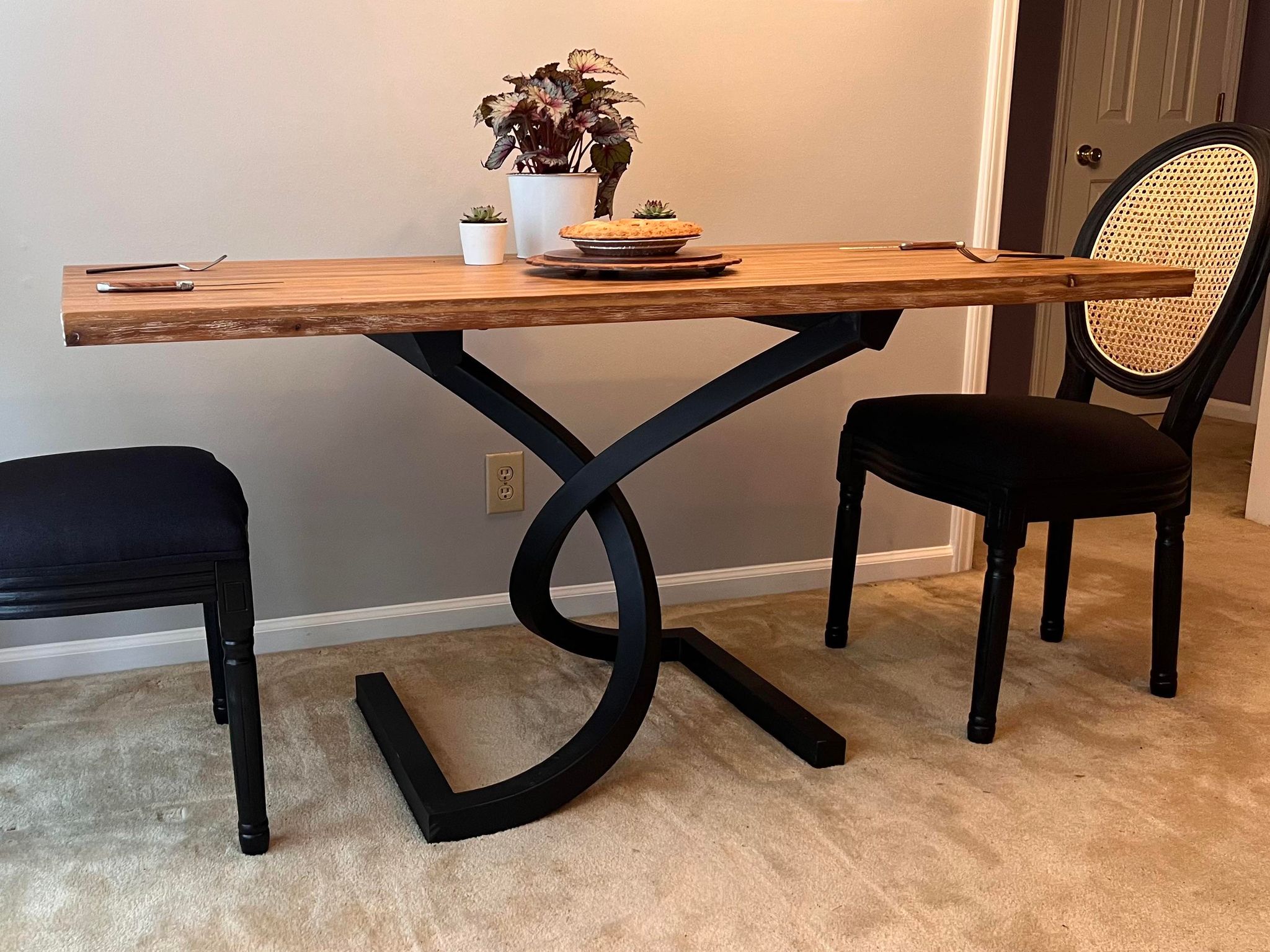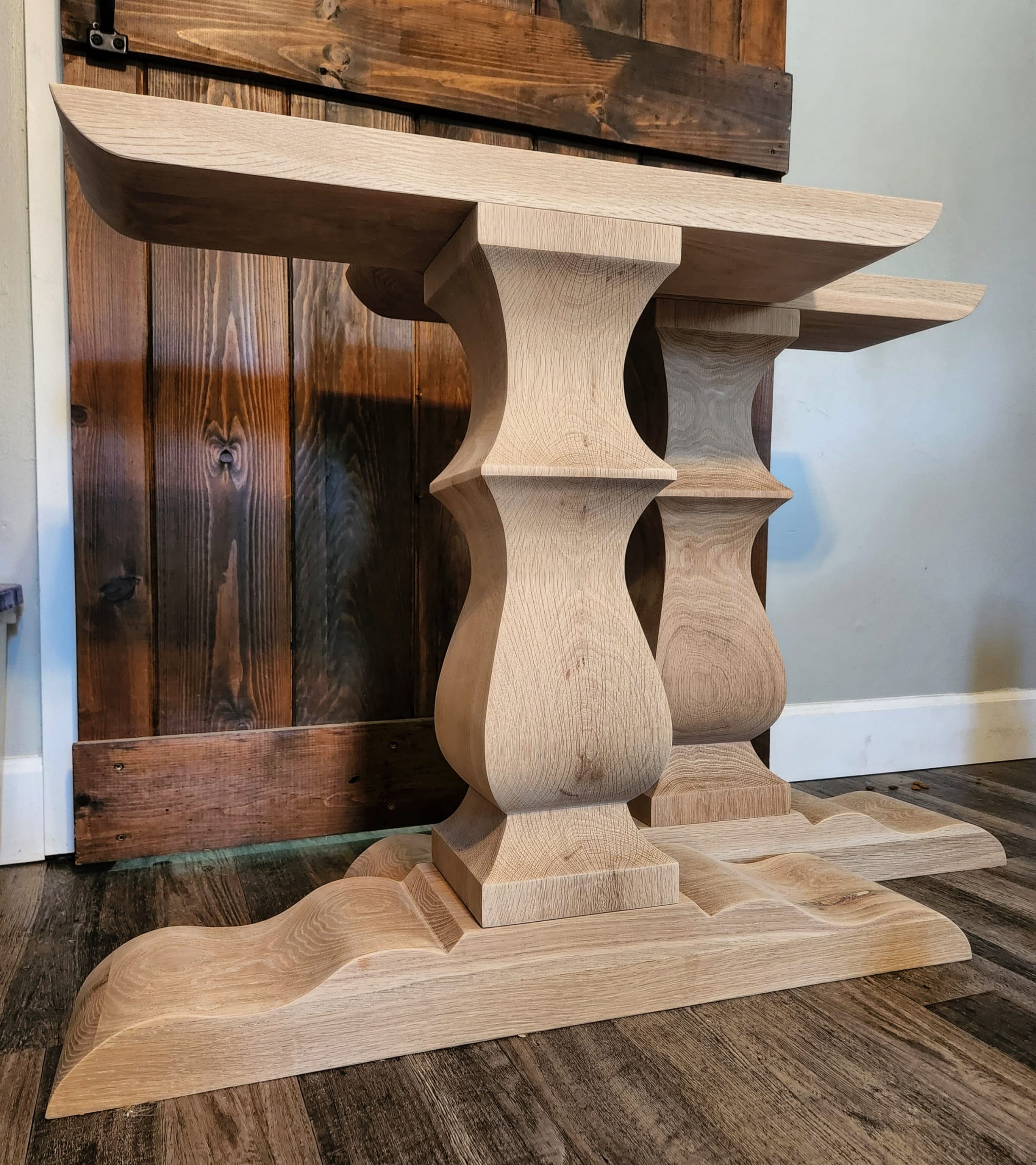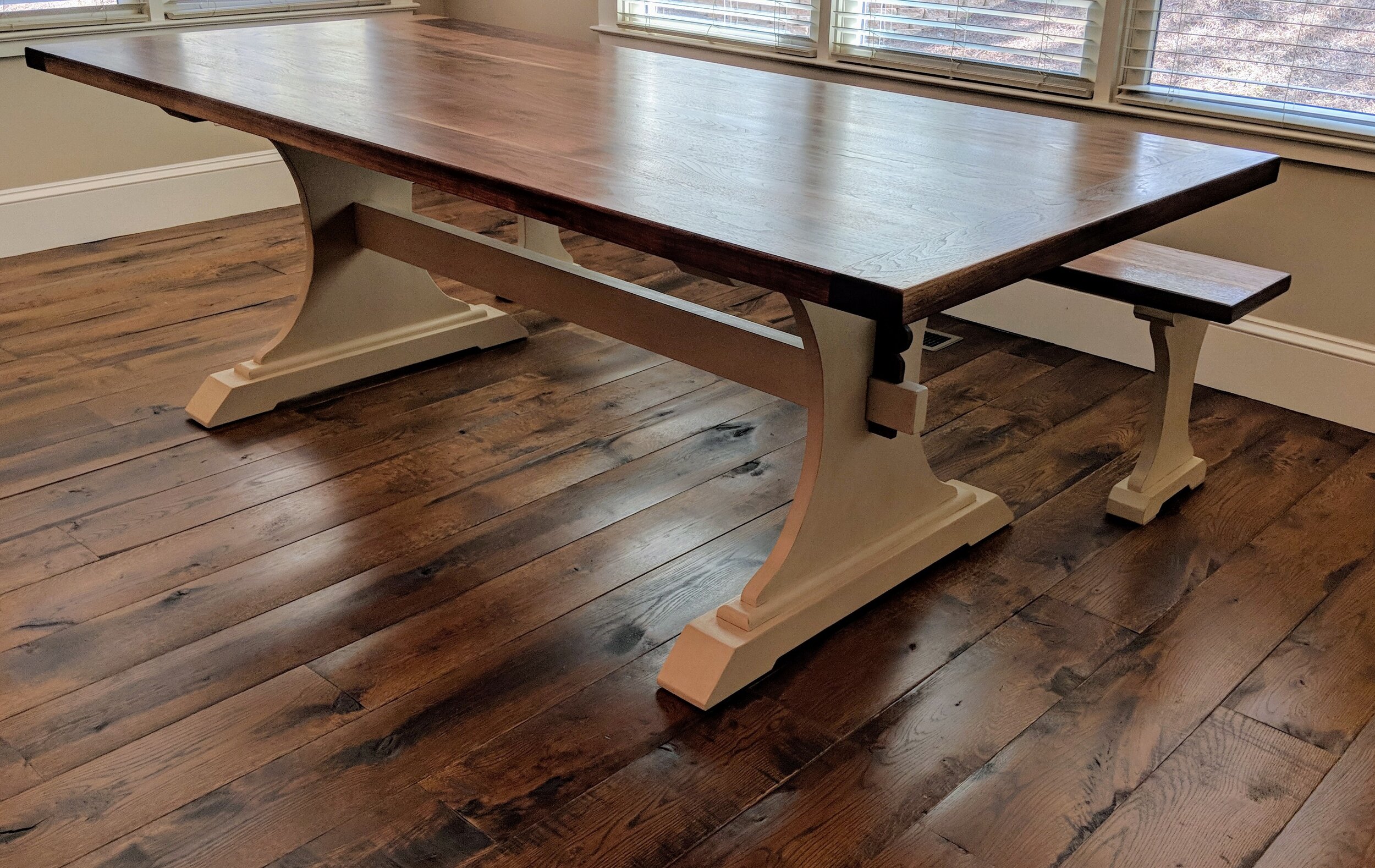Transform Your Furnishings with Premium Dining Table Legs Wood Options
Checking Out the Various Sorts Of Eating Table Legs Wood for Your Eating Area
The option of eating table legs timber can greatly impact both the aesthetic and practical top qualities of your eating room. Strong timber alternatives, such as oak and walnut, provide a classic look with unequaled resilience, while engineered wood options provide ingenious styles that simulate the splendor of all-natural grains.
Strong Wood Options

Unlike engineered materials, strong timber is less prone to warping and damage over time when effectively kept. Each item of strong wood is unique, showcasing individual characteristics that include to the appeal and personality of the eating table.
Furthermore, solid wood can be ended up in countless means, ranging from natural oils to stained coatings, permitting house owners to customize their furniture to match their decor. In recap, choosing solid timber for eating table legs not only ensures architectural stability but additionally boosts the visual appeal of the eating area, making it a beneficial financial investment for any kind of home.
Engineered Timber Alternatives

Plywood, created from several layers of wood veneer, is specifically strong and stable, making it an exceptional choice for eating table legs. Its layered make-up enables it to withstand adjustments in humidity and temperature level better than typical solid timber. MDF, on the other hand, supplies a smooth surface for paint or veneering, allowing developers to attain a refined look while keeping structural stability.
Particleboard, typically used in economical options, gives decent toughness and is lightweight, making it much easier to manage. It may not be as sturdy as plywood or MDF. It is essential to think about the intended usage and wanted visual when picking engineered wood choices. These materials not just boost the functionality of eating areas however additionally enable higher layout adaptability, guaranteeing that typical and modern designs can exist side-by-side sympathetically.
Reclaimed Timber Includes
Reclaimed wood offers a distinct mix of sustainability and personality, making it a significantly preferred selection for eating table legs. Sourced from old barns, manufacturing facilities, and various other frameworks, redeemed timber symbolizes a history that new materials merely can not reproduce. Each piece carries its very own tale, marked by distinct imperfections, knots, and differing grain patterns, which add to a table's one-of-a-kind visual charm.
In addition to its aesthetic beauty, redeemed wood YOURURL.com is an environmentally friendly alternative. By repurposing formerly used materials, it lowers the demand for new lumber, hence assisting to conserve woodlands and lessen waste. This lines up with a growing customer preference for lasting practices in decor.
In addition, recovered wood is frequently more sturdy than recently harvested wood due to its age. The natural drying procedure that reclaimed wood undergoes outcomes in a denser and stronger product, making it less at risk to warping and splitting. This boosts the durability of eating tables, allowing them to hold up against the rigors of day-to-day use.
Softwood vs. Wood
When choosing eating table legs, understanding the distinctions in between softwood and wood is critical for attaining both functional and aesthetic goals. They commonly show a more rustic look, making them appropriate for country-style or casual dining areas.
On the other hand, hardwoods, sourced from deciduous trees like cherry, oak, and maple, are renowned for their thickness, toughness, and resilience. The complex grain patterns and abundant colors of hardwoods offer a sophisticated and classic charm, making them suitable for official dining settings. While woods often tend to be a lot more costly and heavier, their durability against wear and tear often warrants the financial investment.
Eventually, the choice in between softwood and wood for dining table legs should straighten with your style vision, usage needs, and spending plan, ensuring that your eating space reflects your individual style while continuing to be practical in time.

Coatings and Therapies
The aesthetic appeal and longevity of table legs can be significantly enhanced via numerous coatings and therapies. These processes not only shield the timber from damages however also elevate its look, permitting it to match varied indoor styles.
One common treatment is discoloring, which penetrates the wood and boosts its all-natural grain while adding color. Spots give an abundant, classy appearance, allowing property owners to match their furnishings with existing style. On the other hand, clear surfaces such as polyurethane or varnish create a safety layer without changing the timber's initial shade, ensuring resilience against deterioration.
Furthermore, all-natural oils, like tung or linseed oil, nourish the timber and use a subtle luster, all while being environment-friendly. These oils enable the surface area to breathe, preventing dampness accumulation and possible warping.
For those looking for a rustic appeal, troubled or weathered finishes can be put on create an aged look, including character to the item. Ultimately, the option of therapies and finishes relies on personal choice, wanted aesthetics, and the particular timber type, making it vital use this link to consider these aspects when selecting eating table legs for your space.
Conclusion
Solid woods, engineered options, and redeemed alternatives each deal distinctive advantages, catering to numerous preferences and needs. Eventually, the option of wood type ought to align with desired design, longevity, and ecological factors to consider, boosting the total eating experience.
The choice of dining table legs wood can greatly influence both the functional and aesthetic high qualities of your dining space - Dining Table Legs Wood. Strong timber choices, such as oak and walnut, offer a classic look with unmatched durability, while crafted timber options provide innovative layouts that simulate the richness of all-natural grains. Strong wood offers a timeless high quality that can elevate the Visit Your URL total style of a dining room. Each item of solid timber is special, showcasing individual characteristics that include to the appeal and personality of the eating table
Furthermore, redeemed wood is frequently extra long lasting than newly gathered timber due to its age.